- Administrator
- Albums and Singles
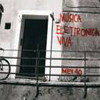 Mev 40 is an essential listening experience. The four discs of this set bring together eight tracks from seven performances spanning 40 years of Musica Elettronica Viva’s activity, from 1967 through 2007. In 1966 musical ideas were flowering in America and Europe. As American expatriates living in Rome they were steeped in the classical New Music scenes happening on each side of the Atlantic, as well the heavy spell cast by Free Jazz. Musica Elettronica Viva was a new hybrid that blossomed out of that fecund sound pool. Within their songs can be heard a zeitgeist that not only spans the decades, but an inclusive and intuitive impulse whose periphery extends far beyond the group and deep into audio culture at large.
Mev 40 is an essential listening experience. The four discs of this set bring together eight tracks from seven performances spanning 40 years of Musica Elettronica Viva’s activity, from 1967 through 2007. In 1966 musical ideas were flowering in America and Europe. As American expatriates living in Rome they were steeped in the classical New Music scenes happening on each side of the Atlantic, as well the heavy spell cast by Free Jazz. Musica Elettronica Viva was a new hybrid that blossomed out of that fecund sound pool. Within their songs can be heard a zeitgeist that not only spans the decades, but an inclusive and intuitive impulse whose periphery extends far beyond the group and deep into audio culture at large.
By continuously extending their musical vocabulary, the sound world of Musica Elettronica Viva (MEV) has remained on the cutting edge of improvisational praxis. The prospect of remaining in a comfortable niche is not something I imagine these musicians would relish. Instead they have made a habit of pushing on the boundaries, of going into domains of practice that test the limits of their abilities, allowing them to expand on their already formidable technical proficiencies. Each member of MEV functions as a tributary bringing in a diverse range of skill sets to their collaborative river of song. The core group consists of Alvin Curran, who has seemingly embraced the entire spectrum of contemporary non-commercial music; Frederic Rzeweski, composer and virtuoso pianist; Richard Teitelbaum, electronic aficionado and pioneer of brainwave generated music; and Garret List, trombonist extraordinaire. As a collective they have amplified their power by bringing in an extremely talented cast of characters that included, among others, saxophonist Steve Lacy, whose presence and influence is heard on a number of these tracks.
The first disc opens with “Spacecraft,” an exemplary noise piece. Highly atonal and asymmetrical, much of the sounds consist of non-traditional instruments like amplified glass plate with attached springs and contact microphones, a move that in 1967 set a precedent for what groups like Matmos and many others do today: amplifying the minutiae of sound. Mixed with a synthesizer self built by Alan Bryant from electronic organ parts and the tenor sax of Ivan Vandor this music has much of the same shrill cacophony that can be heard at any given contemporary noise show, with a notable difference: the players seem more in touch with the ability to be silent and make room for each other than much of what I hear on nights out. As such this track is my least favorite of the set, though it does have some brilliant moments. Finding those moments within its 30 minutes is what makes it problematic for me.
More nuanced than the power chords of punk rock in their strategies of opposition to the state, the socio-political concerns of MEV are a constant thread of connectivity running through their work. Collective musical improvisation is by its very nature a form that embraces egalitarianism. A traditional band set up on the other hand tends towards the hierarchical—with lead singers and lead guitars—which is possibly one of the reasons why many of them never have an active lifespan anywhere close to 40 years. Improv is open-source, free from the dogma of playing songs by rote, making intuitive leaps of the imagination the norm; and when expert players are involved their responses to each other don’t sound sloppy. Their revolt against the military industrial complex is evidenced by more than just their collective structure and approach, and can be heard on songs like “Stop the War” (a live broadcast from WBAI in New York on New Years Eve, 1972). Speaking out against Nixon and the Christmas bombing of Hanoi, Vietnam, this number contains snippets and phrases from traditional war time standards like "When Johnny Comes Marching Home" and "Taps," and carries an emotional resonance that is made all the more powerful by the gorgeous interplay between delicate piano lines and electronic squelch burst from the moog. “Mass.Pike,” from 2007, sends the anti-war message out once more, quoting the above mentioned songs again, but in a different sonic context, along with a conversation of sampled voices saying, “bashing the federal government/I’m not bashing the federal government I’m bashing Slick Willie because he deserves bashing. This is a democracy is it not? We do have a first amendment do we not? Do we not have a first amendment?”
Listening to the entire set is a substantial investment of time, and though it certainly can be enjoyed as background music, attentive listening offers deeper rewards and a more lasting impression. The songs themselves are, for the most part, presented in chronological order; most likely they all would have been if half of them were not over 40 minutes long. “Stedelijk Museum, Amsterdam Pt. 1” and “Pt.2” are thus separated onto discs two and three. It is in the two parts of this performance that some of their most wild playing occurs, as they range out into nearly interplanetary, diverse musical territories. Rzewski plays electronically processed prepared piano on this outing, giving his instrument a nearly alien timbre, well matched with the wheezing soprano sax of Steve Lacy. The group moves easily from slowly churning quiet moments, full of groans and creaks, to insane time signatures that make my mathematically incompetent mind spin with delirium. Throughout the entire set the electronic elements are expertly mixed with the acoustic, each accentuating the other without domination. In each performance there is something new and surprising. Frequently, when I think I have pinned a song down to its constituent elements, to its overall mood and feel, it shifts gears, and spins off on a new trajectory. This is a labyrinth, a musical version of Jorge Luis Borges Garden of Forking Paths, a place where each choice is met with further endless choices and where infinite possibilities hide behind every corner.
samples:
Read More
- Administrator
- Albums and Singles
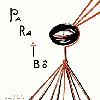 A reissue of a legendary private press Brazilian psych record, this disc represents a welcome document of this too rarely heard classic. With a mellow fusing of psych, folk and plain great songwriting, the album provides a number of instantly memorable sides with subtle and pleasing idiosyncrasies keeping them afloat.
A reissue of a legendary private press Brazilian psych record, this disc represents a welcome document of this too rarely heard classic. With a mellow fusing of psych, folk and plain great songwriting, the album provides a number of instantly memorable sides with subtle and pleasing idiosyncrasies keeping them afloat.
While the album will certainly not be a revelation to those already attuned to the likes of Os Mutantes, Gilberto Gil or Lula Cortes, it is a valuable document of the era's ripe musical scene. The opening title track's simple melody and stripped back production blend Byrds-like fluidity with a distinctly Brazilian sound. The song seems well aware of its strengths and, conversely, its limitations, making for a wholly mature sound whose restraint is as notable as its flavor.
At just under a half hour in length, the album has little time to waste, so each of the eight songs stick closely to the qualities of the opener, representing concise, almost sketch-like frameworks whose material alludes to an even grander potential. Yet the bedroom intimacy of songs like "Quem Me Viu Por Ai?" have a charm all its own, calm, relaxed, and distinctly summery.
Elsewhere the group does display some edge, albeit in a highly sun-splotched manner. The wah'd guitar line of "Meu Sol" hints at the underlying culture from which this album was born, but again it keeps its cards close to its chest. "Quero Voce, Voce" sprawls out a bit, drawing the pop elements out and combing them into a subtly psychedelic, tempo-shifting feel-good romp.
The understated mastery of form is again apparent on "Medu," eschewing the tpyically busy ornamentation of the time for sparsely accompanied, yet equally colorful and playful, melodic lines whose emotional depth is sincere without being cheesy, exciting without being intimidating. The snake charm line backing "Arcozelo" provides grim, prog-rock shadows to the otherwise buoyant backing band.
Considering the widespread love of Brazilian music from this era, it is little surprise that an album originally limited to 500 copies would fly under the radar. And while many releases are far more psychedelic or adventurous or overtly exciting, few are as consistent in material and realization. The closing "Valsa Para Fabrici," with its opening mournful guitar line, flute whisps and stuttering bird-like synthesizer, is as restrained as anything Mutantes ever released, but in this context the result is as surprising as much of that group's output, moving into gliding, surf's up guitar before simmering along into near circus theme fare. Again, the excitement here is in its material, not necessarilly its construction, and with material this good how can you blame them?
samples:
Read More
- Administrator
- Albums and Singles
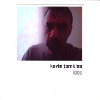 Since establishing their own small-run label to release their work, the duo behind Sutcliffe Jugend and Bodychoke have become extremely prolific, releasing multiple projects this year alone. While to some this could seem excessive and overindulgent, each release from Kevin Tomkins and Paul Taylor (as well as joint releases) have taken entirely different directions. These two releases are both vastly different: Loss is mostly just vocals and guitar (recorded over the span of two days), while Vocal Sound Collage is exactly what the title indicates.
Since establishing their own small-run label to release their work, the duo behind Sutcliffe Jugend and Bodychoke have become extremely prolific, releasing multiple projects this year alone. While to some this could seem excessive and overindulgent, each release from Kevin Tomkins and Paul Taylor (as well as joint releases) have taken entirely different directions. These two releases are both vastly different: Loss is mostly just vocals and guitar (recorded over the span of two days), while Vocal Sound Collage is exactly what the title indicates.
Loss opens with "Dignity for a Dying Man," a 15-minute piece of noisy chaos over gliding violin loops and low register murky guitar. The combination of the noisier guitar and scatter-shot sound collage with Tomkins’ snarling, disgusted vocals give the track a rambling, manic feel, though the looped violin keeps it somewhat reigned in. The violin also appears on "I Cannot Loose the Thing I Never Had" and also provides a more gentle counter-balance to the rawer noise collage elements, but its calmer opening, paired with gentle guitar, starkly contrasts the industrial collage that ends the song.
The backward loops and wheezing sounds of "See Her Disappear" make it perhaps the most dissonant piece here. Never really reaching into the land of noise, it instead cradles a creepy sense of isolation, from the random looped sounds and nasal vocals that appear feel like the sonic equivalent of a madman’s ranting. "Fucking Loss" and "Double Dare" go the other direction, being equally traditional guitar playing and fuzzed out chaos, the latter’s soft vocals and random violent guitar outbursts give a good sense of the alternating depression and rage that comes with any form of loss.
Kevin Tomkins’ vocals, especially in the late 1990s incarnation of Sutcliffe Jugend, have always worked best while in a rage: the SJ material managed to be disturbing and sound truly deranged even when the lyrics occasionally delved into near self-parody territory, and his screaming in Bodychoke complimented his more quiet passages well. Here it is a bit more of a mixed bag, considering most of the pieces are built upon dramatic, disgusted snarling, which is sometimes TOO over the top. Occasionally he channels a bit of Nick Cave with his angst, but never quite reaching the same levels of technicality, instead moments feel more like the angry ramblings of a shut-in. Which, given the concept and motivation behind the album, works well in that capacity.
samples:
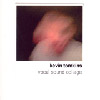
The other album is split down the middle into two distinct parts. The first four pieces date from 2003 and 2004 of collaged vocal noises. The first of the four layers cut up fragments of voice that sound like they’re speaking an alien language over drawn out and pitch shifted ambient passages of voice. The second segment mixes frog-like guttural groans and falsetto like gibberish singing, not far removed from some of Mike Patton’s work or Yamatsuka Eye’s vocal spasms with Naked City. There is a more musical quality here, with occasional bits of jazzy scat singing and lighter moments that resemble an army of gnomes running around a field.
The third segment’s deep grows and breathing are pegged out volume wise to the point of overdriven distortion and the rhythmic elements and processing makes it feel like a capella power electronics, only eventually lightened at the end by layered chanting and more vast open soundscapes. The tracks that follow, "Attic Songs," all were recorded in one day in November 2008, take on a different quality that feel less like sound collage, and more like traditional music with voice as all instruments.
"Gentle Teather" takes buzzing loops of voice fragments and places actual soft vocals on top, the actual words counterbalancing the random phonemes and syllables nicely. "Shock and Tease" musically takes a rhythm made simply from repeating the track title over and over, but has a lighter, open quality to it. "River Fog" makes Tomkins’ voice sound like electronic percussion and droning synths that are rhythmically sequenced, with vocals on top giving it a much more "song" like quality that the first half of the disc doesn’t show.
The closing "The Third State" is the only track that incorporates other elements: Tomkins adds clarinet while his long time musical partner Paul Taylor works a vocoder and the result is a piece of marching like rhythms and clarinet squeaks that give a lighter, almost jaunty feel while the others had a more pronounced element of darkness to them.
While the Between Silences label has been releasing a lot of material from these two, it doesn’t feel excessive or overly indulgent. Each work has been distinct and extremely different from one release to the next so any attempt to combine albums would easily result in a great deal of disparate and unrelated sounds alongside each other. While I would assume many people are frustrated that these aren’t all manic, angry rants against women and prostitutes over hellish feedback, I find this greater openness and experimentation far more engaging and multifaceted than just the harsh noise they do so well.
samples:
Read More
- Administrator
- Albums and Singles
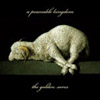 Along with the likes of label mates (and fellow Chicagoans) Locrian, The Golden Sores have taken a modernized approach to drone, away from the traditional academia of La Monte Young and the like, but also diverging from the metal leanings of Sunn O))) into its own realm of ambience and electronic sensibilities.
Along with the likes of label mates (and fellow Chicagoans) Locrian, The Golden Sores have taken a modernized approach to drone, away from the traditional academia of La Monte Young and the like, but also diverging from the metal leanings of Sunn O))) into its own realm of ambience and electronic sensibilities.
Like Locrian, The Golden Sores lean heavily on synthesizers and electronics, though the two projects are quite unique in their own way. For the most part, even with the occasionally harsher moments of this disc, it never leads into metal riffing, and when it does begin to encroach on harsher sounds, there is usually a softer ambient underpinning that keeps the dissonance reigned in.
Opener "Double Gyres" begins with organ-like opening tones that slowly drift on, an opaque wall of sound that stays static as shrill guitar feedback cuts around. The guitar tone and texture is extremely raw, but not overly harsh or aggressive, but instead provides a great counterpoint to the otherwise peaceful electronic ambience. "The Awful Rowing Toward God" is similar in its presentation with the jagged guitar shrikes, though here with lower end buzzing amp noise and a simple, but buoyant bassline that keeps the song drifting along, occasionally resembling the more electronic dub oriented Main tracks, though here the guitar slides into raw noise territory about midway though before retreating back to a more purely ambient coda.
Living up to its title, "Klonopin" is a more subdued affair. There is the cutting guitar buzz here, but it is more mellow and a bit lower in the mix. It never fully disappears or becomes ignored, but it definitely allows for more of the ambient textures to shine through, and is at its core a more subdued work than the previous two, but never falling into overly boring or mundane territory. "Ondine" also keeps the fuzzed out guitar noise reigned in, focusing instead on slower gentle notes and slow-motion sheets of sound.
The closer, "A Vision," distills much of the album down for an appropriate conclusion, combining the brittle guitar shriek with drifting synthetic ambience, though here it remains a relatively sparse mix that, while not harsh, instead has a cold, dark sense of isolation about it. The guitar swells to a buzz-saw level of noise before retreating, closing the album on a somber, restrained note.
This duo has created one of those kind of works that manages to maintain that tenuous balance between reflective ambient soundscapes and grinding, coarse guitar noise in a way that never feels like an unnecessary contrast, but instead mutually inclusive extremes that captivate for both the whisper and the roar that appear.
samples:
Read More
- Administrator
- Albums and Singles
 Between his roles as both filmmaker and Fonal Records head, Sami Sanpakkila has somehow managed to find time to produce this, his fifth album of solo material under the Es moniker. Citing Pekka Streng's "Kesamaa" as its impetus makes sense considering the immediately nostalgic summer feel of the record, though Es' eyes are set on a much more distant and ethereal horizon than Streng's song-based structures.
Between his roles as both filmmaker and Fonal Records head, Sami Sanpakkila has somehow managed to find time to produce this, his fifth album of solo material under the Es moniker. Citing Pekka Streng's "Kesamaa" as its impetus makes sense considering the immediately nostalgic summer feel of the record, though Es' eyes are set on a much more distant and ethereal horizon than Streng's song-based structures.
The title of the record alone alludes to this intended effect, translating to "The Children of the Summerland." While this is certainly the case however, this is far from a naïve foray into elven territory. Indeed, much of the disc's strength lies in the ample inhabitance of less desirable realms, evoking a balance between tender forest traipsing and, simultaneously, a sense of the deeper mystery just behind the foliage.
The album opens on a glistening and undulatory note with "Ennen Oli Huonommin," whose backing drone grasps at the fluttering bussle of notes emitted atop. The track has the same toying playfulness of labelmate Tomutonttu's output, albeit with a real sense of direction. This forward thrust continues on the brief "Kesa Ja Hymyilevat Huulet," a mix of tinkertoy Casios and a lofty, folkloric vocal line, clarifying the album's role as a collection of songs, albeit highly abstracted, even distracted ones.
The centerpiece of the disc lies in the back-to-back efforts of "Sateet Sun Sielusta" and the album's title track, the most extended efforts here and the ones on which Sanpakkila's constructions are able to fully blossom. The former opens with a brief piano excursion whose increasing density mounts into a full blown meteor shower of trickling lines and hovering drones. Reaching far beyond the skies of many of his contemporaries, the piece is a truly momentous one whose forward thrust continues the consistent sense of trajectory runnning throughout the album.
Following in its wake is the 21-plus minute title track, whose opening vocal lines sway atop a writhing lullaby line before building into a veritable orchestra filling memories of sand castles past. The immense reach of the work is staggering, but never without a sense of intimacy or proximity; this is a series of small moments conjoined by their inherent connections, not a vast singularity too overpowering to remain relatable.
The album's closing track, "Haamut Sun Sydamesta," has a chorus of voices bounding between speakers, rendered foreign by their proximity to the psychedelic mash-up atop them, which I suppose is the idea here. A singer-songwriter album at heart, each piece takes its own path, unfolding without bounds to become a true achievement and one of the most beautiful records of summer.
samples:
Read More
- Administrator
- Albums and Singles
 Cocteau Twins founder and indie guitar demi-god Robin Guthrie has always been both reliable and respectable (musically, anyway), but seldom surprising. The pleasant and elegant dreampop instrumentals of Angel Falls do not waver from this trend. However, they don't indicate any declining quality in his singular soundscape wizardry either.
Cocteau Twins founder and indie guitar demi-god Robin Guthrie has always been both reliable and respectable (musically, anyway), but seldom surprising. The pleasant and elegant dreampop instrumentals of Angel Falls do not waver from this trend. However, they don't indicate any declining quality in his singular soundscape wizardry either.
The most glib and simplistic (yet extremely accurate) way to describe Angel Falls is “this sounds exactly like some of the better Cocteau Twins songs, but with Liz Fraser’s vocals replaced with guitars.” Of course, I was never a particularly huge Fraser fan, so that is perfectly fine with me. However, the absence of a vocalist does have some negative consequences: pop instrumentals are kind of a hard sell. I suppose perhaps a vocalist humanizes music and creates a stronger connection with the listener, or maybe the presence of lyrics just adds more information and variation to the melody (which makes multiple listens more rewarding), or maybe there is some intangible third possibility that has not even occurred to me yet. I suspect it is a riddle that I will never truly solve. Regardless, I hope this EP finds a suitably receptive audience somehow, as this is some great summer music. It would also be great music to soundtrack a shoegazer barbeque, an alternative prom, a montage of bittersweet romantic memories, or an epic heroin binge. To his credit, Guthrie has presciently and decisively filled those niches before most of the world was even aware that they existed.
Angel Falls consists of four short songs, all of which are quite enjoyable and adhere very closely to the sound that Guthrie is known for: layers of chiming arpeggios and hazy heavily chorused chords, melodic bass lines, and an atmosphere of blissful melancholy. “Camera Lucida” kicks off the EP with all of these elements in maximum abundance and gradually builds from a gentle ringing melody into something that approaches a rock song, while the following track (“Love Never Dies a Natural Death”) is a sleepy gem of slow-motion, quavering beauty. The somewhat darker closing track (“Delicate”) is probably the best piece on the album, as it shimmers, glistens, quivers, and chimes with an elegant, spidery beauty and spacey bliss that one can only get from the guitar of Robin Guthrie. The whole thing is over in less than twenty minutes, which makes this EP a very effective teaser for Guthrie's upcoming new album: rather than overstaying its welcome, Angel Falls left me wishing it hadn't ended so soon.
While I certainly enjoyed Angel Falls quite a bit, it is nevertheless a clear example of why Guthrie has always been a bit of a puzzle to me: it has been over twenty-five years since the Cocteau Twins' debut album was released and there has been very little deviation from that original formula since. It seems strange to me that someone who heavily influenced My Bloody Valentine and played such an integral role in defining the whole shoegazer genre would be so reluctant to expand his very narrow sonic palette. I wonder if Guthrie is in a creative rut or if he just a victim of his own prolific output: it is hard to imagine Kevin Shields being as revered as he is if Loveless had been followed by half a dozen more albums in roughly the same vein. Then again, perhaps Guthrie just has a very specific vision of how he wants to sound and has spent his entire adult life trying to perfect it. Or maybe his more adventurous impulses are vented in his filmmaking and soundtrack work. Or maybe he has been saving up all of his wild and brilliant ideas for next Violet Indiana album (if it ever comes out). Yet another possibility is that I need to stop overanalyzing his creative arc and just be happy that he is sitting in France quietly amassing a large body of great songs- it’s hard to say. Regardless, a new release from Guthrie is always welcome and 2009 is packed full of them: he has a new full-length (Carousel) dropping in August and another EP (Songs to Help My Children Sleep) slated for October.
samples:
Read More
- Administrator
- Albums and Singles
 Helen Scarsdale founder, sound installation artist, and mega-collaborator extraordinaire Jim Haynes claims that his work involves the process of rusting. More specifically, the sounds he makes connote the suffocating grip of decay and the passage of time. On Sever Haynes marries that focus to the creation of dystopian worlds and crippled environments, creating a convincing and uncomfortable environment of his own as he proceeds.
Helen Scarsdale founder, sound installation artist, and mega-collaborator extraordinaire Jim Haynes claims that his work involves the process of rusting. More specifically, the sounds he makes connote the suffocating grip of decay and the passage of time. On Sever Haynes marries that focus to the creation of dystopian worlds and crippled environments, creating a convincing and uncomfortable environment of his own as he proceeds.
In the case of Sever, the elegance of Haynes' noise can be traced to its deceptive simplicity. On the surface this record is a grinding, crunchy, and faded environmental recording rescued from brittle tapes discovered by Haynes. Each of the four pieces that compose Sever appear to reveal the natural world reclaiming what it had lost with the advent of science and industry. It's as though someone took a small microphone and tape recorder into the guts of industrial factories and abandoned machine shops and captured their internal breakdown. Beneath this veneer, however, is a cinematic and carefully constructed experience. The convincing nature of Haynes' noise belies the fact that Sever is a patient and incredibly well-structured record. More than just a collection of unnerving ambience, it is a psychologically heavy record with plenty of gloom and despair to go around.
Haynes' compositional style has the power to convince; he creates a believable world and then populates it with familiar events. Upon hearing objects move in the stereo field, the sense that objects should also be moving in the room is accomplished. Similarly, the crunch of leaves, the tumbling of dust and rock on pavement, and the sound of wind through trees is manifested by Haynes' various techniques. Whether or not he actually used samples of such events is ultimately unimportant. Haynes is adept at making his noise seem very real, very organic, and very familiar. All the while Haynes siguides his army of samples and loops with a near-invisible hand. He utilizes a broad range of dynamics to create verses and crescendos of noise. Using erratic rhythms, fractured hiss, and the whir of electricity, Haynes weaves together a stage upon which the rest of the album sits. The rustle of industrial and organic detritus is sometimes contrasted against this background, along with radio static, thundering metal, and even the melodic ring of bells. They all provide a measure of unpredictability and dynamic variety, and they also amplify the record's uneasy creepiness.
And that brings me to the psychological power of Sever. While the narrative of decay and time run a red thread through this record, there's also a feeling of dread and expectancy coursing through it. Haynes' environments have an emptiness attached to them, as though they are waiting for something or someone to come along and fill them up. As a result, a great deal of anticipation and tense nervousness finds its way onto this record. Perhaps Sever's focus on decay is the source of this discomfort. Or perhaps the music renders the void of decomposition and death too effectively; either way, a loneliness and an increasing sense of helplessness builds up over the record's 52 minutes. After realizing it was there, I expected Haynes to somehow eradicate or cure it. Instead, he leaves it to hover over the room in silence after the record ends. Nothing is fulfilled and there's no sense of completion; only a bleak heaviness remains when the music stops. It is neither pleasant nor comfortable, but it is powerful and unique and entirely worth experiencing.
The first 100 copies of Sever come with a bonus CDr titled Severed. This CDr contains a recording of a sound installation that was used, in part, to develop the record.
samples:
Read More
- John Kealy
- Albums and Singles
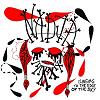 This decidedly un-Nadja release is a stunning surprise by a pair of artists that I thought I had completely figured out. This single-sided LP by Aidan Baker and Leah Buckareff nods more to Angelo Badalamenti than to the usual avant rock gods. Gone are the waves of crushing riffs and in their place is some well placed suspense and elegant, soundtrack-like motifs.
This decidedly un-Nadja release is a stunning surprise by a pair of artists that I thought I had completely figured out. This single-sided LP by Aidan Baker and Leah Buckareff nods more to Angelo Badalamenti than to the usual avant rock gods. Gone are the waves of crushing riffs and in their place is some well placed suspense and elegant, soundtrack-like motifs.
With Nadja, I have a tendency now to sit back and wait to see what others think of a release before charging in. As much as I like them, there’s only so much of their slowed down shoegaze that I need. However, their oddball releases invariably are worth getting and Clinging to the Edge of the Sky is no exception to that rule. Baker’s drumming and Buckareff’s bass sketch out a brooding backdrop for Baker’s Twin Peaks-infused guitar; the music here sits more comfortably beside Bohren & Der Club of Gore rather than with Nadja’s usual musical companions like My Bloody Valentine and Boris.
Unfortunately, at one side of an LP the amount of music leaves me starving for more. I’m not a fan of etched LPs as unlike a picture disc, you never put the etching side up on the record player so rarely do they get much attention. It would be nice if Nadja explored this style a little more or at least bring some of this noir shading to their usual sound. As it stands, Clinging to the Edge of the Sky is a brilliant, if brief, anomaly in their catalogue.
Read More
- John Kealy
- Albums and Singles
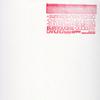 The latest instalment in Blast First Petit's ongoing 10" series in honor of Alan Vega’s 70th birthday sees Greg Anderson and Stephen O’Malley team up with Pan Sonic’s Mika Vainio for a killer Suicide cover. Also included is a rare outing by Head of David’s Stephen Burroughs and a new live track by Alan Vega himself.
The latest instalment in Blast First Petit's ongoing 10" series in honor of Alan Vega’s 70th birthday sees Greg Anderson and Stephen O’Malley team up with Pan Sonic’s Mika Vainio for a killer Suicide cover. Also included is a rare outing by Head of David’s Stephen Burroughs and a new live track by Alan Vega himself.
Sunn O))) and Pan Sonic’s version of “Che” from Suicide’s classic self-titled album is a surprisingly straight cover of the song. Based on Sunn O)))’s previous “covers” like their reinvention of Metallica’s “For Whom the Bell Tolls” on Flight of the Behemoth, I was expecting an almost unrecognizable mass of guitar noise but they have kept “Che” in an instantly familiar form. Joe Preston does a mean vocal as Sunn O))) create a powerful guitar-led interpretation of the original’s organ riff. Vainio adds a layer of electronic grit to the piece, finishing off an already perfect cover.
On the flip side is an unreleased original from Vega, “Thirteen Crosses,” which was recorded live last year. I have never had a huge interest in Vega aside from the older Suicide material and this song is not begging me to investigate his recent work further. The snarls by numbers piece could be by any number of Suicide imitators and as such is a letdown considering this is actually Vega himself doing it. This is followed by an acoustic rendition of “Goodbye Darling” by Burroughs. Although not a stellar performance, it is a competent and slightly unsettling take on this song with more echoes of Michael Gira than of Alan Vega.
Hardcore fans of Suicide have probably already got their hands on this EP but I would call this essential listening for Sunn O))) lovers as this is one of their better excursions outside of their full lengths.
Read More
- Administrator
- Albums and Singles
 This album is yet another fine testament to the French composer’s genius; these pieces have bucketloads of creativity and depth to them despite being shelved for well over 20 years. Composed between 1982 and 1984, the first piece showcases Ferrari’s interest in tape collage work and sampling whereas the second piece is one of his less than traditional compositions for a traditional ensemble.
This album is yet another fine testament to the French composer’s genius; these pieces have bucketloads of creativity and depth to them despite being shelved for well over 20 years. Composed between 1982 and 1984, the first piece showcases Ferrari’s interest in tape collage work and sampling whereas the second piece is one of his less than traditional compositions for a traditional ensemble.
Dialogue Ordinaire avec la Machine translates to “Ordinary Dialogue with the Machine” and sees Ferrari and Yannick Gornet “in conversation with the machine.” Like many artists in the early '80s, they were experimenting with what the sampler was capable of. Their voices are cut up, processed and bounced across the audio landscape. Clanging rhythms and mechanical, atonal melodies run through the piece, each one sounding like a soundtrack to a 1960s Soviet cartoon about machines. The piece culminates with “Love Song with the Machine” where they explore the erotic possibilities of the machine (in a time long before the words “porn” and “computer” were synonymous) to an ever changing and persistent beat. The human voice is treated in a way to make it more machine-like as the piece (and the act of lovemaking) progresses; this is more musique organique rather than concrete.
On “Sexolidad,” Ferrari has captured his idea of sexual sensuality and anatomy in music. This was originally to be part of a larger suite along with “Comme une Fantaisie Dite des Réminiscences” (which was released on the album Piano-Piano on Montaigne) but Ferrari abandoned his plans for the suite. The pieces are linked but “Sexolidad” has a far bolder and dramatic sound than “Comme une Fantaisie...” thanks to the use of a 15 piece orchestra instead of a pair of pianos. Throughout “Sexolidad” Ferrari nods to Stravinsky; blocks of sound do battle with each other with the energy of the music threatening to spill over at any moment. There is an accompanying text to the music which Ferrari intended the listener to read during the piece but it works just as well without it (but obviously is a lot more fun reading the pervy Frenchman's words).
What always has and continues to draw me to Ferrari is his sense of playfulness combined with a superb ear for audio adventure and Dialogue Ordinaire avec la Machine/Sexolidad is a fine example. Both pieces demonstrate the fun of Ferrari and Dialogue Ordinaire in particular shows how he always embraced new technology in his own inimitable way. As I seem to finish off every Ferrari review I do, hopefully there are hours more of his work left unreleased. If Tupac and Muslimgauze can be such endless fountains of posthumous work, with any luck Ferrari will have equally a productive career now.
samples:
- Dialogue Ordinaire avec la Machine (Part 1)
- Dialogue Ordinaire avec la Machine (Part 5)
- Sexolidad (Part 2)
Read More
- Administrator
- Albums and Singles
June 23rd was the official release date for 'Leaves of Life'.
Leaves of Life is the essential collection of songs by some of today’s most creative Indie Folk musicians. This record brings together unique and contemporary artistic voices to create an evocative and stunning collaboration; with all proceeds from the sales of this record going to benefit important relief programs in Africa, and other communities in great need around the world.
Curated and produced by Buck Curran of the Alt-folk duo Arborea, Leaves of Life features 19 exclusive songs by artists Alela Diane, Devendra Banhart, Marissa Nadler and Black Hole Infinity, Fern Knight, Shanti Curran (Arborea), Rio en Medio, Larkin Grimm, Mi and L’au, Starless and Bible Black, Silver Summit, Micah Blue Smaldone, David Garland, Citay, Big Blood, Mica Jones, Eric Carbonara, Ora Cogan, Cursillistas, and Magic Leaves…along with the beautiful art work of musician Hanna Tuulikki. This project hopes to further inspire people around the world to join in vital artistic and social efforts to make a better life for all of us.
In addition the digital release of the compilation will include special bonus tracks by Jozef van Wissem, Laurent Brondel, Denise Dill, and Plains.
To purchase the cd in the U.S. please visit Darla Records
http://darla.com/index.php?fuseaction=e4_ecom.ecom_superitem_detail&item_cat_id=36667
All proceeds from the sale of this record go to the World Food Program!
Here's a few fact you don't want to know:
Every 6 seconds a child dies of hunger
5 dollars will feed one baby for one year
Over 850 Million people do not get enough to eat
Every day 25,000 people die of hunger; 14,000 of them are children
if you would like more information about the world food program please visit: www.friendsofwfp.org
Please help us get the word out about this record compilation- every cd that sells will help!!!
Read More

